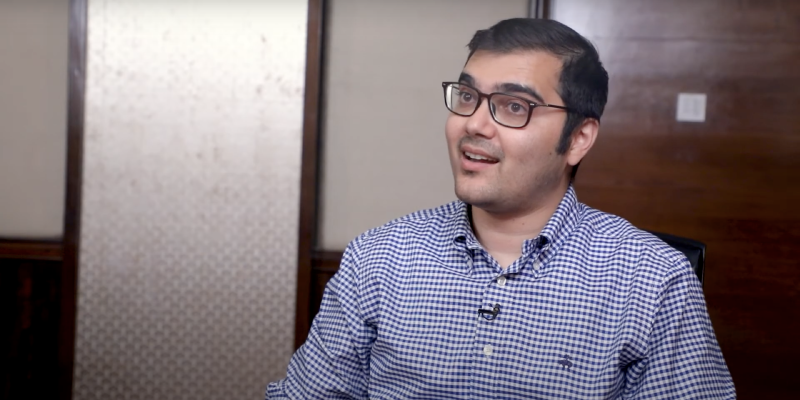MMA Forum: mobile startups bring the creative edge to marketing agencies and brands
The fifth annual Mobile Marketing Association’s Asia-Pacific summit held recently in Singapore, showcased a range of mobile startups and ways in which larger media agencies are acquiring or engaging with them.

The MMA also publishes an annual Yearbook with best practices in mobile marketing across the region and holds annual awards called the Smarties on a regional basis as well as for countries such as India and China. See my review of marketing startups from the 2013 summit here.
The 2014 Summit showed how brand giants such as Unilever, P&G and Mondelez have venture arms to look at mobile innovation, and also showcased a range of mobile design practices and startups in marketing. For example, Unilever engages with startups through a call for collaboration at global events such as the annual Mobile World Congress in Barcelona. “We signed up with 11 startups at MWC this year for collaboration,” said Rahul Welde, VP for Asia and Africa at Unilever.
Unilever has a venture fund which engages startup companies and invests in future technologies. The company has an experimentation lab where employees can take part in live scenarios and actually play around with digital technologies, going way beyond basic training and workshops.
Case Profile: Mondelez and Mobile Futures
“We are teaming up with startups to stay on top of the innovation game,” said Peter Mitchell, Global Media Innovations Director at Mondeléz International, the snack giant owning brands such as Cadbury, Nabisco, Oreo, Tang and Trident.
Its Mobile Futures initiative is intended to boost consumer connections by collaborating with some of the brightest and most innovative minds in the mobile space – startup entrepreneurs. For the US edition, Mondelez received hundreds of applications and selected nine startups in the areas of social TV, mobile retail and SoLoMo (social/location/mobile). This process reportedly resulted in the launch of seven new mobile pilots in just 90 days with Oreo, Chips Ahoy, Trident and Stride gum.
As part of Mobile Futures US, the company also teamed up with Prehype, a venture firm, to launch two startups, Prankstr and Betabox, which will operate as standalone companies if seed funding is secured. Prankstr allows users to prank their friends and share the experience through social networks; Betabox distributes product samples through e-commerce companies.
The aim of the startup engagement programme held next in Brazil was also to discover startups that have “shelf-ready” technology in areas ranging from SMS to social shopping. “Not only will we support the startups, but we’ll also bring home their innovative spirit. We’re creating a culture of ‘intrapreneurship,’ reflecting new ideas and ways to connect with our consumers,” according to Natacha Volpini, Digital Media Manager at Mondelēz Brazil.
Mondelez Brazil invests more than 15 percent of its total marketing spend in digital. Evol8tion, an innovation agency based in New York, works with US-based startups on Mobile Futures.
The Mobile Futures Australia programme, launched in May this year, pairs five snack brands such as Philadelphia Cream Cheese with five startups to accelerate and scale existing mobile innovations in just 90 days.
“In Australia, around half of consumers' online activity takes place on a mobile phone or tablet. Our goal is to become one of the top mobile marketers in the world,” according to Bonin Bough, Vice President of Global Media and Consumer Engagement at Mondelez.
Mondelez brands will start by spending one week working side-by-side with their startups at their headquarters, immersing the company's marketers into startup culture. Big brands can thus engage with startups to change their thinking about mobile media, become more entrepreneurial in culture, and make better decisions for the brands.
Mobile Design Tips
Speakers at the Summit offered a range of useful tips and case studies for effective mobile marketing design. Mobiles play a key connection and consumption role for digital omnivores, and help bridge the O2O gap (between online and offline worlds).
“Don’t think of mobile as a subset of digital; it is pushing digital in new ways,” urged Myung Jo Choi, Facebook managing director for Southeast Asia. In 2013, the amount of time people in the US spent on digital media surpassed TV for the first time, he said. 53% of Facebook revenue comes from mobile. Emerging Asian markets spend more time on mobile than other countries.
Mobile marketers should learn techniques like building personas for targeted users, identify patterns of intuitive usage in the mobile experience, and address contextual relevance, advised Graham Christie, Chief Commercial Officer & Founding Partner, Big Mobile Group.
Another useful piece of advice came from Suresh Venugopalan Shankar, Founder, Crayon Data: don’t give too much choice to customers otherwise it leads to decision paralysis, postponed decisions and less satisfaction.
“Thanks to mobiles, we have all the world’s stores in our pocket. Psychology shows that shopping options should be moderate in number, between four and six. Choice is the currency of the future, and choice engines will take over from search engines for shopping,” he observed.
The Third Screen dominates user engagement, but many marketers are still stuck in the old age, observed Dick van Motman, CEO at Dentsu Aegis Southeast Asia.
Data, visualisation and analytics can help marketers make sense of mobile in this regard, said Anindya Datta, CEO of startup MobileWalla. Analytics can help marketers get their hands around important data points such as where the mobile ad impressions were served and what audience is reached – but harder to correlate that with TV and other media spend and find out how much of ad revenue was wasted.
“Mobile more than any other medium can deliver services to people when they are making decisions and choices. Mobiles help you get into the decision marketing architecture of consumers,” said Barney Loehnis, Head of Ogilvy Digital in Asia. He showed the compelling example of Misereor Social Swipe, which made it easier for donors to contribute to causes by simply swiping their credit cards on interactive animated kiosks.
Dr Beverly Harrison, Director of Mobile Research at Yahoo Labs, showcased new voice-powered apps for Daily Alarm Clock, On The Go and MyChannel TV.
The Road Ahead
Brands are now realising that advertising on mobile will enhance their brand perception as being modern, dynamic and innovative, said Kitty Brown, Head of Audiences, BBC Global News. Mobile advertising is effective, even more so among affluent consumers in Asia.
But many marketers still don’t ‘get it’, so mobile startups and evangelists have their homework cut out. A typical marketing manager’s attitude is “My nephew can develop an app for $5,000 or less,” joked Graham Kelly, Regional Executive Creative Director, APAC, Isobar.
“The most important word in mobile success is democratisation. Get people to use the mobiles and Internet. Make data free, make money from targeted advertising and permission marketing,” advised Vishnu Mohan, Chief Executive Officer, Havas Media, Asia.
“It is more than just marketing via mobile, it is business transformation via mobile,” said Welde of Unilever.
“With Kenya’s mPesa mobile payment service, you can truly see the transformative power of mobile in society. mPesa is in every nook and corner of Kenya, it is the most recognised brand, most loved, most used in the country,” said Welde.
The mobile journey is long and tough and just beginning, with new waves such as the Internet of Things. “Even the best organisations have to keep reinventing themselves for the age of mobile,” concluded Barney Loehnis of Ogilvy.











